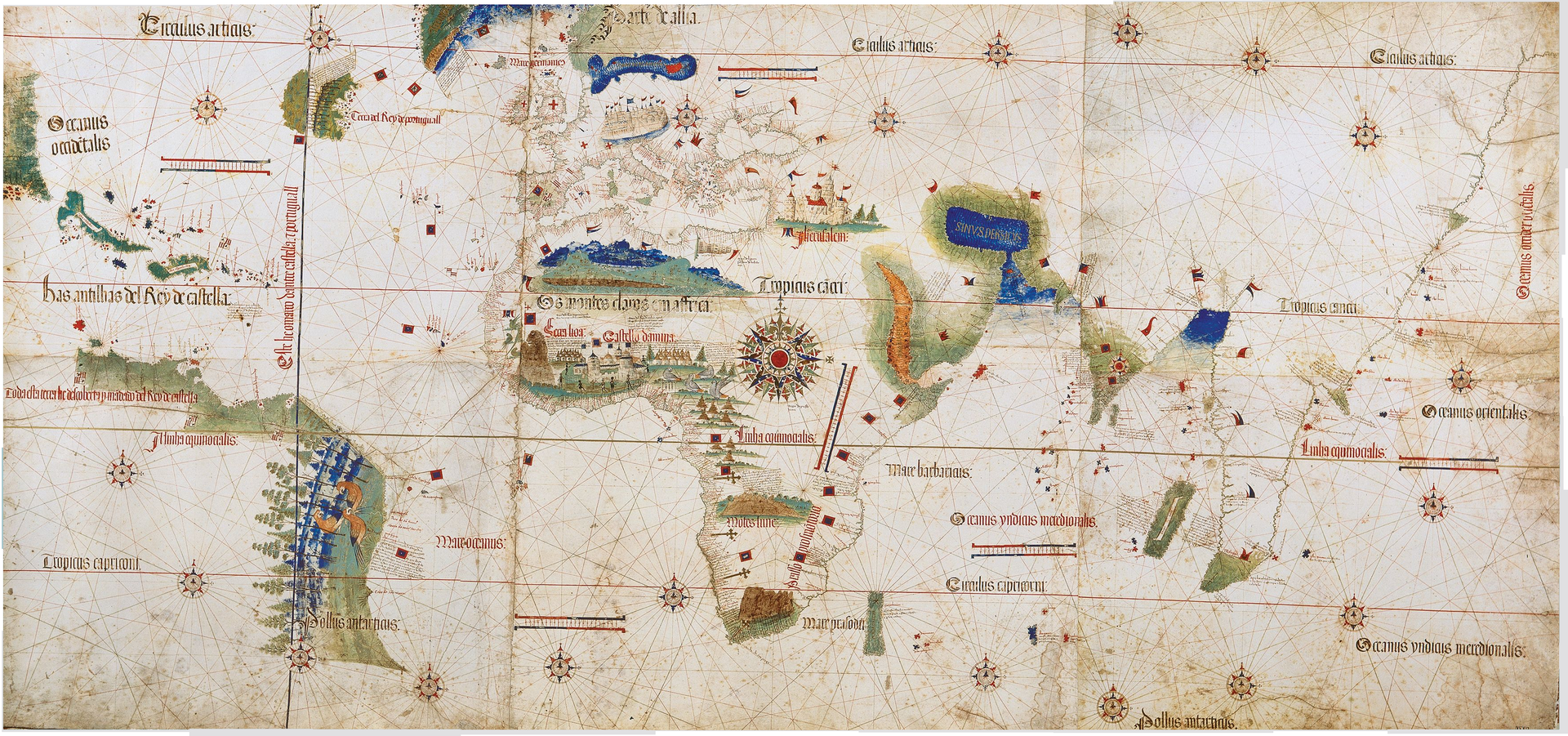This week in 1494, the Spanish and Portuguese Empires signed the Treaty of Tordesillas—brokered by the Pope. The treaty divided the globe between the two great powers, fifty-fifty.

Image: the Cantino planisphere (1502), depicting the Tordesillas Merdian, splitting the world
The Treaty of Tordesillas drew a line through the Atlantic, from pole to pole. New lands (non-European countries) to the West belonged to Spain. That gave it the Americas, which Columbus had recently “discovered” for the Spanish king and queen. Portugal got new lands to the East, which gave it Asia—again confirming recent exploration, since Portugal had rounded the horn of Africa and sailed to Asia shortly before Columbus’ first voyage. As it turned out though, South America extended further East than either party realized, so the great line actually cut through the southern continent. That gave Portugal a claim to part of the Americas—and that’s why the people of Brazil speak Portuguese to this day.
The amazing thing about the Treaty of Tordesillas is that the two sides honored it more or less consistently. The other European powers, however, did not—since they hadn’t participated, and since Protestant powers like England and Holland didn’t care about a treaty brokered by the Pope. So as the two Catholic empires lost power over the centuries, the treaty lost relevance. Still, Spain and Portugal never terminated it. And their former colonies, like Argentina and Chile, invoked the treaty as late as the 20th Century, to support their territorial claims—as has did Indonesia.

0 Comments